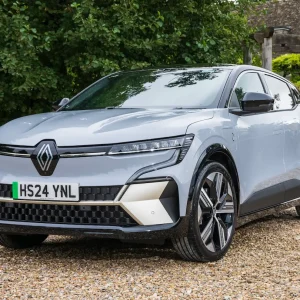Nissan may be a Japanese carmaker, but there’s actually a lot about the Qashqai that is distinctly British.
Designed in London Paddington and built in the firm’s Sunderland plant, the Qashqai’s roots and heritage belong in part here in the UK and its success in this country is virtually unrivalled elsewhere in the world.
Say the word ‘crossover’ and the first car likely to come to mind is the Qashqai. It has sat at the very heart of the segment for a decade now and over two million have rolled off the production line since 2007.
With rivals entering the market thick and fast, though, repeating this early success is no easy feat and Nissan is hoping that a mid-life facelift will be enough to cement the Qashqai in its current top position.
What’s new?
Designers were keen not to stray too far from the previous model’s winning formula and have played it safe in terms of design. Styling tweaks include a subtly reshaped bonnet, sleeker LED lights and a restyled rear bumper.
Inside sees a significant uplift in terms of quality with some new material upgrades, while improvements to sound insulation around the cabin aim to improve comfort levels.
Technological enhancements include a focus on safety, with this latest car introducing intelligent emergency braking and an adaptive light system for the first time, while semi autonomous safety technology is due to join the range in January (we’re yet to receive confirmation on how much this will cost as an option).

The final headline change is the introduction of a new range-topping trim level called Tekna+, which features a range of luxury kit as standard including a large panoramic sunroof, dual-zone climate control, LED adaptive lights, a premium sound system, 19in alloy wheels and heated seats, to name a few.
There’s also a range of safety kit included on our car including lane departure warning, blind spot monitoring, high beam assist, front and rear parking sensors and a 360° reversing camera.
There’s no denying that the SUV offers good value for money, but it’s still surprising to see a car known for its budget credentials get so close to the £30,000 barrier.
Range of petrol and diesel options
You have a choice of four turbocharged engines here in the UK ? two petrols and two diesels. For now, diesel is likely to take the lionshare of sales, with the 1.5-litre unit tested here expected to be a particularly popular choice for fleets.
The all-important headline figures are good, with the Qashqai slipping under the 100g/km threshold in two-wheel drive guise, while a combined fuel economy of 74.3mpg should mean fewer visits to the pumps. Mated to the engine is a six-speed manual gearbox and the two work well together, creating slick gear changes.

There’s a small amount of audible engine clatter when accelerating; however, at cruising speeds the engine performs very well indeed and despite some uninspiring performance figures, the Qashqai feels quicker on the road than its 0-62mph time of 11.9 seconds suggests.
Very little has changed in terms of driveabilty compared with the old car. The Qashqai is as easy to manoeuvre around the city as before and its handling is for the most part very composed. There’s still a little body roll in the corners and the steering lacks any feel; however, for an urban family car it ticks a lot of boxes and ride quality is much improved over the previous version too.
Disappointing interior
One of the criticisms of the previous Qasqhai was that its interior quality significantly lagged behind the competition. This latest models aims to address this and we do see a significant upgrade in the materials used. However, considering the price of our test car, we were disappointed with the amount of cheap plastics and dull fabrics still visible inside the cabin – quilted leather seats aside.
The 7in infotainment system, although a marked improvement over the previous model, still feels dated and clunky to use, while the controls and trip computer also feel old in comparison to rivals.
Practicality wise, there are plenty of storage compartments throughout the cabin; however, at 430 litres the boot is smaller than many of its rivals. Interior roominess is more than acceptable, though, with space for a family of five.

Another drawback (although it’s unlikely Nissan will complain about this one) is the fact that you cannot drive down a road without seeing another Qashqai, and it’s popularity has harmed the cars residual values somewhat, which is not helped by the volumes used in rental channels during the earlier years. This revised model does see a small uplift, though, with our test car predicted to hold 34% of its value after three years and 60,000 miles.
Because of these more competitive residuals and strong running costs, the Qashqai manages a very good 59.1p per-mile whole-life cost.
However, although the Qashqai is a better car in almost every way and the sums add up, I can’t help but feel a little frustrated that the cabin and infotainment technology still hasn’t moved the game forward enough.





